(Page créée avec « * Jars with screw-on or sealed lids * Saucepans * Kitchen thermometer reaching 100°C * Kitchen gloves * Wide neck funnel ») |
(Mise à jour pour être en accord avec la nouvelle version de la source de la page) |
||
| (22 révisions intermédiaires par 4 utilisateurs non affichées) | |||
| Ligne 1 : | Ligne 1 : | ||
| − | {{ | + | {{Tuto Details |
| + | |Main_Picture=Conserves_de_légumes_pasteurisés_Nikon-_2018.04.16_-7.jpg | ||
| + | |Licences=Attribution (CC BY) | ||
| + | |Description=Preserve your surplus of fruit and vegetables by means of pasteurisation | ||
| + | |Area=Food, Health | ||
|Type=Tutorial | |Type=Tutorial | ||
| − | |||
| − | |||
| − | |||
|Difficulty=Easy | |Difficulty=Easy | ||
| + | |Duration=10 | ||
| + | |Duration-type=minute(s) | ||
|Cost=0 | |Cost=0 | ||
|Currency=EUR (€) | |Currency=EUR (€) | ||
| − | | | + | |Tags=conserve, légume, gaspillage, alimentaire, pasteurisation, conservation, Low-tech Tour France |
| − | |||
| − | |||
| − | |||
|SourceLanguage=fr | |SourceLanguage=fr | ||
|Language=en | |Language=en | ||
|IsTranslation=1 | |IsTranslation=1 | ||
}} | }} | ||
| − | {{ | + | {{Introduction |
|Introduction=This tutorial has been created in collaboration with Claire Yobé, an expert in pasteurisation with many years of experience in the field. | |Introduction=This tutorial has been created in collaboration with Claire Yobé, an expert in pasteurisation with many years of experience in the field. | ||
| Ligne 21 : | Ligne 21 : | ||
'''Key facts on food wastage:''' | '''Key facts on food wastage:''' | ||
| − | *1/3 of food produced around the world goes off or is wasted | + | * 1/3 of food produced around the world goes off or is wasted |
| − | *In France, 50% of waste happens at home | + | * In France, 50% of waste happens at home |
| − | *A person in France wastes 20kg of food per year | + | * A person in France wastes 20kg of food per year |
| − | *19 % of fruit and 31% of vegetables are wasted, making these the produce we waste the most | + | * 19 % of fruit and 31% of vegetables are wasted, making these the produce we waste the most |
'''What is pasteurisation?''' | '''What is pasteurisation?''' | ||
| Ligne 53 : | Ligne 53 : | ||
This tutorial focuses on fruit and vegetables only where risk is very low. However, if in doubt and any suspicious smells or colours arise, do not hesitate to throw the preserve away. | This tutorial focuses on fruit and vegetables only where risk is very low. However, if in doubt and any suspicious smells or colours arise, do not hesitate to throw the preserve away. | ||
}} | }} | ||
| − | {{ {{ | + | {{TutoVideo |
| − | |Material=*Surplus fruit and vegetables | + | |VideoType=Youtube |
| − | *Water | + | |VideoURLYoutube=https://www.youtube.com/watch?v=SKLeqX0O0NA |
| + | }} | ||
| + | {{Materials | ||
| + | |Material=* Surplus fruit and vegetables | ||
| + | * Water | ||
|Tools=* Jars with screw-on or sealed lids | |Tools=* Jars with screw-on or sealed lids | ||
* Saucepans | * Saucepans | ||
| Ligne 62 : | Ligne 66 : | ||
* Wide neck funnel | * Wide neck funnel | ||
}} | }} | ||
| − | {{ | + | {{Tuto Step |
| − | + | |Step_Title=Preparing the fruit and vegetables: | |
| + | |Step_Content=* Peel and wash the fruit and vegetables to be pasteurised thoroughly | ||
| + | * Whether from a recipe of your choice (like ratatouille, compote, puréed fruit or veg, fruit in syrup etc...) or cut into pieces in water, place the fruit or veg in a saucepan over heat. | ||
| + | * Heat until brought to a simmer | ||
|Step_Picture_00=Conserves_de_légumes_pasteurisés_4.JPG | |Step_Picture_00=Conserves_de_légumes_pasteurisés_4.JPG | ||
| − | |||
| − | |||
| − | |||
| − | |||
}} | }} | ||
| − | {{ | + | {{Tuto Step |
| + | |Step_Title=Preparing the jars: | ||
| + | |Step_Content=* Wash hands, jars and lids thoroughly | ||
| + | * Place a saucepan with a little water on the heat and bring to a simmer | ||
| + | * Roll the jar in the hot water and let it stand upright in the pan, still over low heat | ||
| + | Note: Putting the jar in hot water heats the jar up, ensuring that all of the contents are kept at 80°C when filling it | ||
|Step_Picture_00=Conserves_de_légumes_pasteurisés_1.JPG | |Step_Picture_00=Conserves_de_légumes_pasteurisés_1.JPG | ||
|Step_Picture_01=Conserves_de_légumes_pasteurisés_2.JPG | |Step_Picture_01=Conserves_de_légumes_pasteurisés_2.JPG | ||
| − | |||
| − | |||
| − | |||
| − | |||
| − | |||
}} | }} | ||
| − | {{ | + | {{Tuto Step |
| + | |Step_Title=The canning process: | ||
| + | |Step_Content=*Ensure hands are clean | ||
| + | *Use the thermometer to check the temperature of the fruit or vegetables is at 80°C | ||
| + | *Fill the jar to the brim, using the funnel if necessary | ||
| + | *Close the jar and screw the lid if necessary, closing it as tightly as possible | ||
| + | *Place the jar upside down on a table, so that the lid is facing downwards and leave to cool | ||
| + | Note: | ||
| + | |||
| + | 1) Two essential stages of pasteurisation are ensuring a temperature of 80°C, as well as closing the jars tightly. | ||
| + | |||
| + | 2) The position of the jar, lid facing downwards, allows for it to be airtight (if it leaks, the preserve will be faulty). It also enables the lid to contract when cooling under the right conditions to seal the lid perfectly | ||
|Step_Picture_00=Conserves_de_légumes_pasteurisés_5.JPG | |Step_Picture_00=Conserves_de_légumes_pasteurisés_5.JPG | ||
|Step_Picture_01=Conserves_de_légumes_pasteurisés_6.JPG | |Step_Picture_01=Conserves_de_légumes_pasteurisés_6.JPG | ||
| − | |||
| − | |||
| − | |||
| − | |||
| − | |||
| − | |||
| − | |||
| − | |||
| − | |||
| − | |||
| − | |||
}} | }} | ||
| − | {{ | + | {{Tuto Step |
| − | |Step_Title= | + | |Step_Title=Storage: |
| − | |Step_Content=* | + | |Step_Content=*Store the preserves in a cool place away from sunlight |
| − | + | Note: Pasteurised preserves can be stored for various months/years in this way | |
}} | }} | ||
| − | {{ | + | {{Tuto Step |
| − | |Step_Title= | + | |Step_Title=Consumption: |
| − | |Step_Content=* | + | |Step_Content=*Eat as much as you like |
| − | * | + | *Once opened, store the jar in the fridge and consume with 7 days |
}} | }} | ||
| − | {{ | + | {{Notes |
| − | |Notes=* | + | |Notes=*Video tutorial created by Camille Duband and instructions written by Pierre-Alain Lévêque for the Low-Tech Tour, April 2018. |
| − | * | + | *Know-how delivered by Claire Yobé |
| − | * ARTE, [https://www.arte.tv/player/v3/index.php?json_url=https%3A%2F%2Fapi.arte.tv%2Fapi%2Fplayer%2Fv1%2Fconfig%2Ffr%2F074787-105-A%3Fautostart%3D1%26lifeCycle%3D1&config=arte_nude&lang=fr_FR Le gaspillage alimentaire en 7 chiffres clés] | + | *ARTE, [https://www.arte.tv/player/v3/index.php?json_url=https%3A%2F%2Fapi.arte.tv%2Fapi%2Fplayer%2Fv1%2Fconfig%2Ffr%2F074787-105-A%3Fautostart%3D1%26lifeCycle%3D1&config=arte_nude&lang=fr_FR Le gaspillage alimentaire en 7 chiffres clés] |
* Wikipedia, [https://fr.wikipedia.org/wiki/Pasteurisation pasteuristation] | * Wikipedia, [https://fr.wikipedia.org/wiki/Pasteurisation pasteuristation] | ||
| + | |||
| + | This English translation has been possible thanks to the PerMondo project: Free translation of website and documents for non-profit organisations. A project managed by Mondo Agit. Translator: Annie Eve | ||
| + | }} | ||
| + | {{PageLang | ||
}} | }} | ||
| − | {{ | + | {{Tuto Status |
| − | |Complete= | + | |Complete=Published |
}} | }} | ||
| + | {{Separator}} | ||
Version actuelle datée du 29 septembre 2020 à 10:13
Description
Preserve your surplus of fruit and vegetables by means of pasteurisation
Introduction
This tutorial has been created in collaboration with Claire Yobé, an expert in pasteurisation with many years of experience in the field.
The aim is to easily preserve surplus fruit and vegetables for long-term storage, whether from your vegetable patch (in Summer for example), or because you have bought more than you need.
Key facts on food wastage:
- 1/3 of food produced around the world goes off or is wasted
- In France, 50% of waste happens at home
- A person in France wastes 20kg of food per year
- 19 % of fruit and 31% of vegetables are wasted, making these the produce we waste the most
What is pasteurisation?
Pasteurisation is a process used to preserve food. It consists in heating food to 80°C before being bottled or preserved in jars, followed by cooling.
How is it possible to preserve food by means of pasteurisation?
By heating fruit and vegetables to 80°C, a large proportion of pathogenic micro-orgnanisms are destroyed. Placing food in containers at this temperature drives oxygen out and prevents the remaining pathogens from multiplying.
What kind of foods can be preserved through pasteurisation?
All kinds of fruit and vegetables can be easily preserved by means of pasteurisation. However, this method cannot be applied to meat or fish since 100% of the pathogens present need be destroyed, which can be achieved through sterilisation.
What nutritional value do pasteurised foods have?
Cooking clearly diminishes nutritional value as it reduces the vitamin and protein content in food.
Pasteurisation is one of the heat treatment processes which least reduces nutritional value as the food is not heated to very high temperatures, contrary to sterilisation which can reach temperatures of up to 120°C.
How should we consume pasteurised foods?
You can consume as much pasteurised fruit and as many pasteurised vegetables as you wish. Once the container has been opened, it should be stored in the fridge and the contents eaten within 7 days.
Are there any risks involved with pasteurisation?
As with all heat treatment methods for food preservation, it is vital that the jar or tin be airtight. If air penetrates the container, pathogenic micro-organisms may develop.
This tutorial focuses on fruit and vegetables only where risk is very low. However, if in doubt and any suspicious smells or colours arise, do not hesitate to throw the preserve away.Youtube
Matériaux
- Surplus fruit and vegetables
- Water
Outils
- Jars with screw-on or sealed lids
- Saucepans
- Kitchen thermometer reaching 100°C
- Kitchen gloves
- Wide neck funnel
Étape 1 - Preparing the fruit and vegetables:
- Peel and wash the fruit and vegetables to be pasteurised thoroughly
- Whether from a recipe of your choice (like ratatouille, compote, puréed fruit or veg, fruit in syrup etc...) or cut into pieces in water, place the fruit or veg in a saucepan over heat.
- Heat until brought to a simmer
Étape 2 - Preparing the jars:
- Wash hands, jars and lids thoroughly
- Place a saucepan with a little water on the heat and bring to a simmer
- Roll the jar in the hot water and let it stand upright in the pan, still over low heat
Note: Putting the jar in hot water heats the jar up, ensuring that all of the contents are kept at 80°C when filling it
Étape 3 - The canning process:
- Ensure hands are clean
- Use the thermometer to check the temperature of the fruit or vegetables is at 80°C
- Fill the jar to the brim, using the funnel if necessary
- Close the jar and screw the lid if necessary, closing it as tightly as possible
- Place the jar upside down on a table, so that the lid is facing downwards and leave to cool
Note:
1) Two essential stages of pasteurisation are ensuring a temperature of 80°C, as well as closing the jars tightly.
2) The position of the jar, lid facing downwards, allows for it to be airtight (if it leaks, the preserve will be faulty). It also enables the lid to contract when cooling under the right conditions to seal the lid perfectly
Étape 4 - Storage:
- Store the preserves in a cool place away from sunlight
Note: Pasteurised preserves can be stored for various months/years in this way
Étape 5 - Consumption:
- Eat as much as you like
- Once opened, store the jar in the fridge and consume with 7 days
Notes et références
- Video tutorial created by Camille Duband and instructions written by Pierre-Alain Lévêque for the Low-Tech Tour, April 2018.
- Know-how delivered by Claire Yobé
- ARTE, Le gaspillage alimentaire en 7 chiffres clés
- Wikipedia, pasteuristation
This English translation has been possible thanks to the PerMondo project: Free translation of website and documents for non-profit organisations. A project managed by Mondo Agit. Translator: Annie Eve
Published
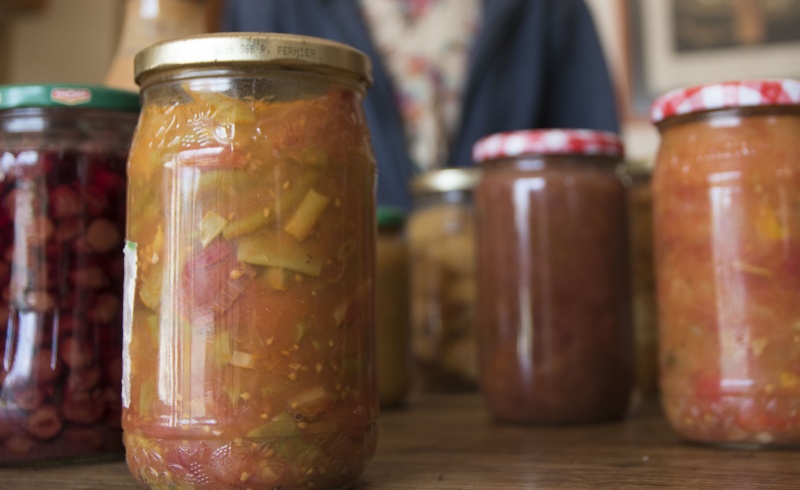
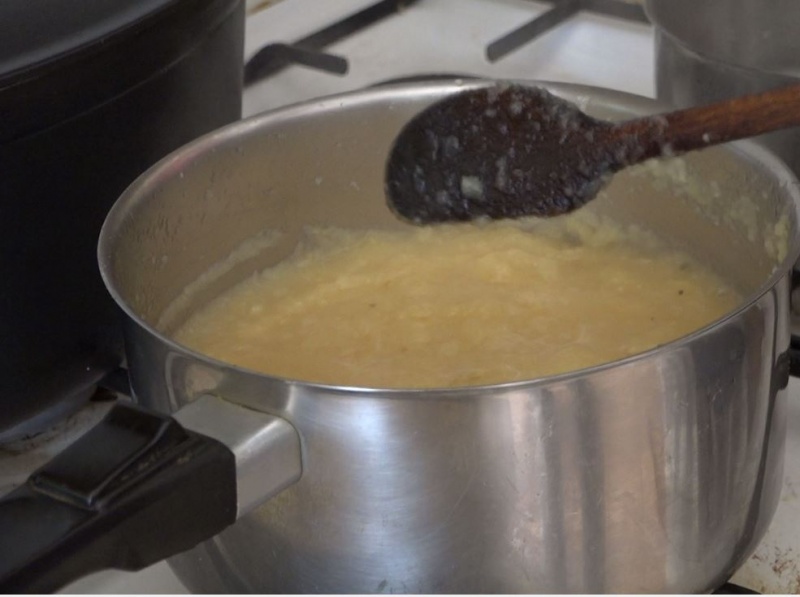
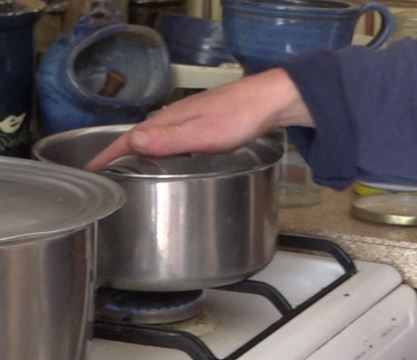
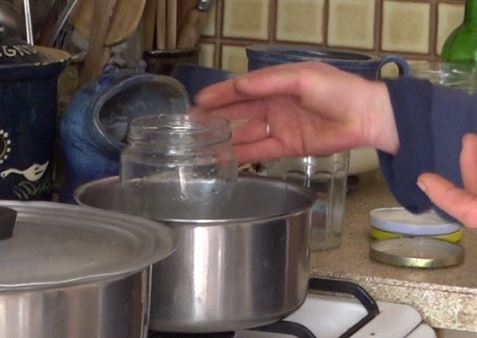
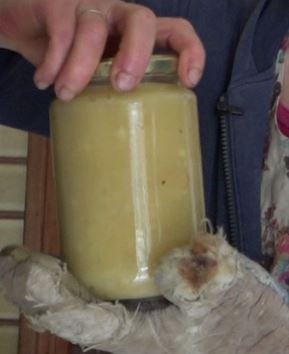
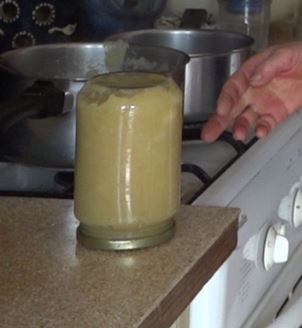
 Français
Français English
English Deutsch
Deutsch Español
Español Italiano
Italiano Português
Português